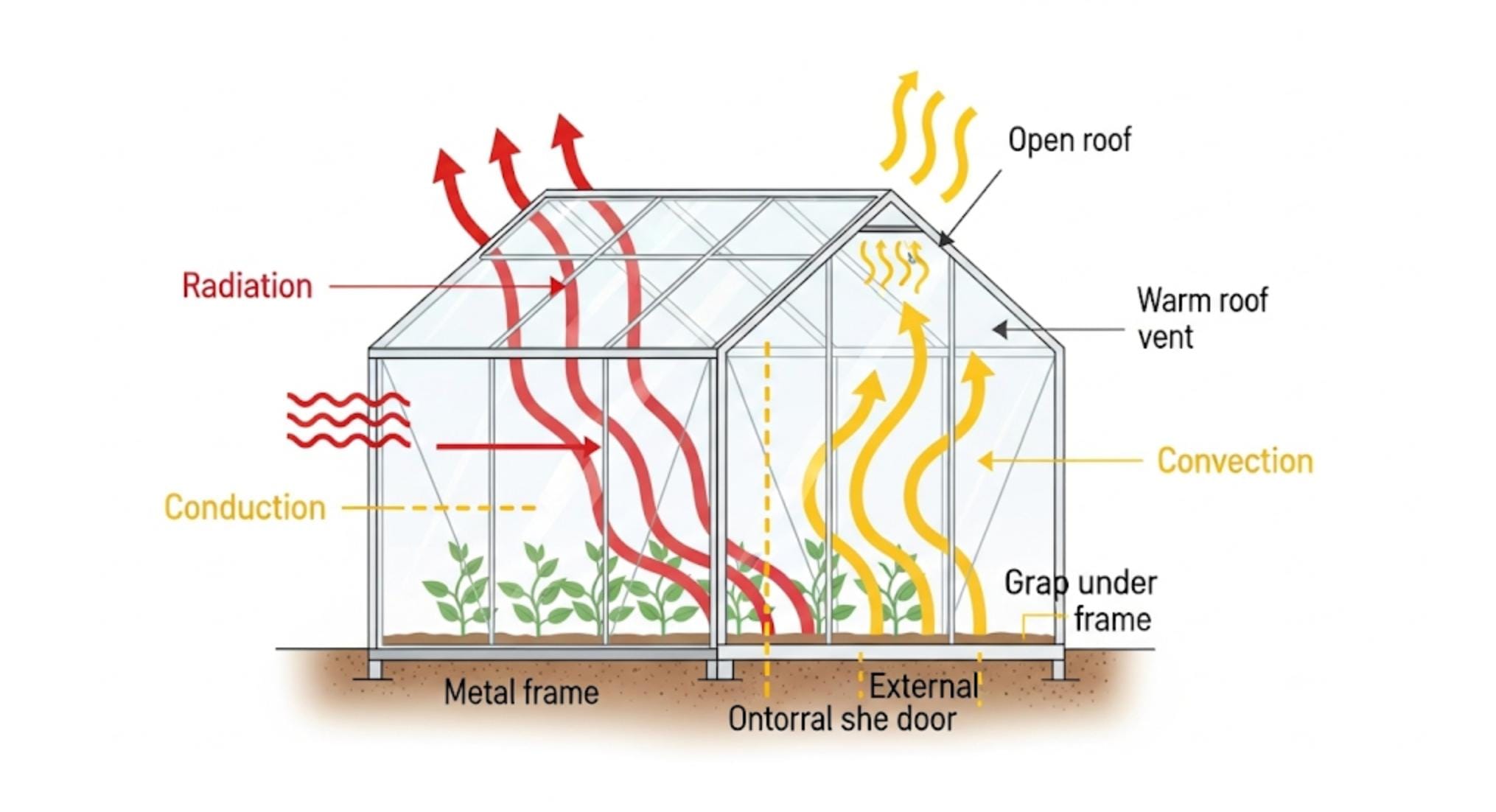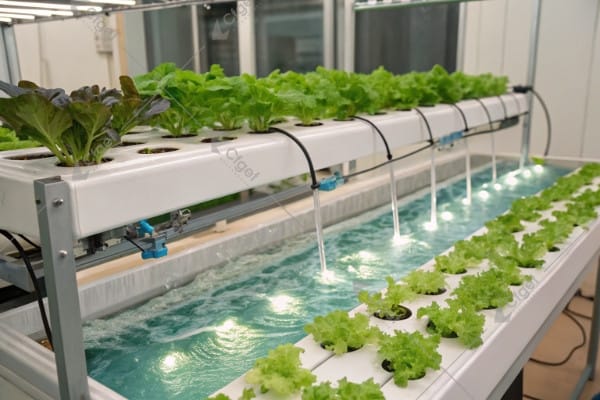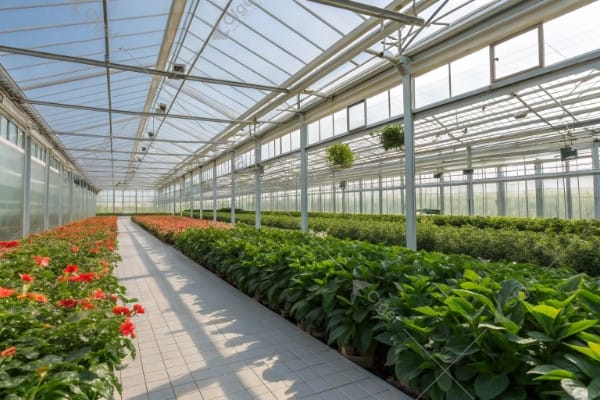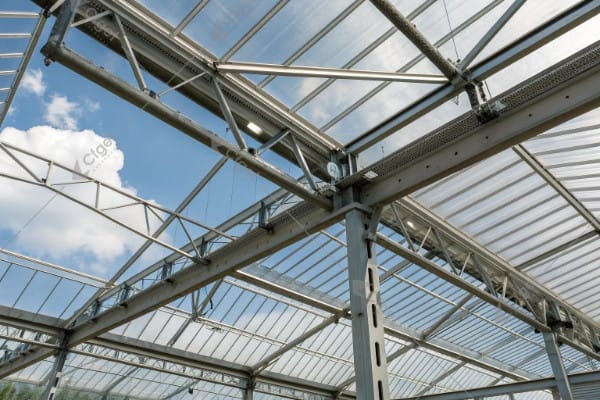Harsh winters destroy profits. Traditional greenhouses collapse under snow loads. Advanced cold-climate systems enable profitable production in the world’s most challenging environments.
Cold climate greenhouses with reinforced structures and advanced insulation systems achieve 40-60% energy savings while maintaining optimal growing conditions. These specialized facilities enable profitable year-round production in regions with temperatures below -30°C and heavy snow loads.
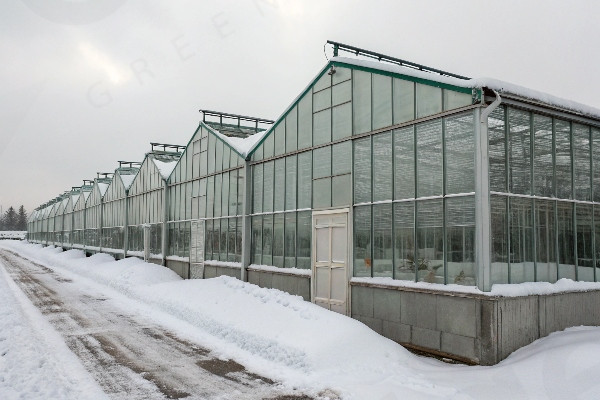
Over nearly three decades, I’ve designed greenhouse systems for some of the world’s harshest climates. From Siberian farms to high-altitude operations in Central Asia, the principles remain consistent. Success in cold climates requires three elements: structural integrity, thermal efficiency, and intelligent automation. Traditional greenhouse designs fail catastrophically in these environments.
The Science of Survival: Engineering for Heavy Snow Loads & High Winds?
Structural failure means total crop loss. Snow loads exceed design limits. Wind forces tear apart inadequate frameworks. Engineering solutions protect investments and ensure continuous production.
Cold climate greenhouses require structural designs rated for 150-300 kg/m² snow loads and wind speeds up to 120 km/h. Reinforced aluminum frames with steel support systems, combined with specialized glazing materials, provide the structural integrity necessary for harsh winter conditions.
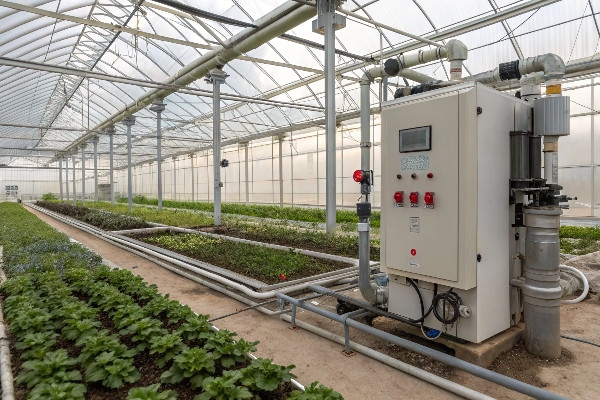
Understanding Environmental Forces
Snow load calculations determine structural requirements for safe operation. Fresh snow weighs 50-200 kg/m³ depending on moisture content. Packed snow reaches 300-500 kg/m³. Ice formation adds significant weight while creating point loads on structural elements. Our engineering teams calculate worst-case scenarios based on 50-year weather data for each installation site.
Wind forces create both positive and negative pressures on greenhouse surfaces. Positive pressure pushes against windward surfaces while negative pressure pulls on leeward sides. Corner locations experience amplified forces due to wind acceleration around structures. Proper foundation design transfers these forces safely to the ground without compromising structural integrity.
Thermal expansion and contraction stress structural connections throughout winter cycles. Aluminum frames expand and contract 2-3mm per meter with temperature changes. Steel reinforcements have different expansion rates, creating stress at connection points. Flexible joint designs accommodate thermal movement while maintaining structural strength.
Reinforced Framework Systems
Aluminum extrusions provide excellent strength-to-weight ratios for primary structural elements. High-strength alloys resist corrosion while maintaining flexibility during thermal cycles. Reinforced profiles increase load-bearing capacity without excessive weight increases. Specialized connection systems distribute loads evenly across structural members.
Steel reinforcement systems handle extreme load conditions beyond aluminum capabilities. Hot-dip galvanized steel resists corrosion in harsh climates. Welded connections provide superior strength for critical load paths. Hybrid aluminum-steel designs optimize material properties for specific applications.
Foundation systems transfer structural loads safely to stable ground conditions. Reinforced concrete footings extend below frost lines to prevent heaving. Anchor bolt systems secure structures against uplift forces from high winds. Drainage systems prevent water accumulation that could cause foundation settlement.
Glazing Systems for Extreme Conditions
Polycarbonate glazing materials withstand impact loads from hail and wind-blown debris. Multi-wall construction provides excellent insulation while maintaining light transmission. UV-resistant coatings prevent degradation from intense solar radiation at high altitudes. Flexible mounting systems accommodate thermal movement without stress cracking.
Glass alternatives offer superior optical properties for light-sensitive crops. Tempered glass withstands thermal shock and impact loads. Laminated glass provides safety benefits if breakage occurs. Anti-reflective coatings maximize light transmission during short winter days.
Sealing systems prevent air infiltration while accommodating structural movement. EPDM gaskets maintain flexibility at low temperatures. Structural glazing compounds provide permanent weather seals. Pressure equalization systems prevent glazing failure from wind pressure differentials.
Slashing Heating Costs: The ROI of Advanced Insulation & Glazing?
Energy costs consume profits in cold climates. Traditional single-layer covering wastes heat. Advanced thermal systems reduce consumption while improving growing conditions.
Advanced insulation and glazing systems reduce heating costs by 40-60% compared to single-layer coverings. Triple-wall polycarbonate and thermal screens provide R-values of 8-12, while energy curtains add additional 30-40% heat retention during nighttime hours.
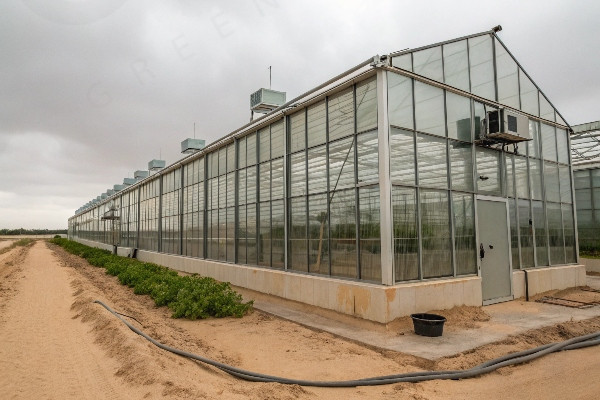
Thermal Performance Optimization
Heat loss mechanisms include conduction, convection, and radiation through covering materials. Conduction occurs through direct contact between warm interior air and cold exterior surfaces. Convection creates air currents that transfer heat from warm to cold areas. Radiation allows heat energy to pass directly through transparent materials to cold exterior environments.
Multi-wall polycarbonate systems trap air between layers to reduce conductive heat transfer. Dead air spaces provide excellent insulation while maintaining light transmission for plant growth. Specialized coatings reflect radiant heat back into growing spaces. Low-emissivity treatments reduce heat loss by up to 30% compared to standard materials.
Thermal bridging occurs where structural elements conduct heat directly from interior to exterior environments. Thermal breaks interrupt conductive paths through aluminum framing systems. Insulated spacer systems reduce heat transfer at glazing connections. Continuous insulation systems eliminate thermal bridges at foundation and wall connections.
Energy Curtain Systems
Automated thermal screens deploy during nighttime hours to retain heat within growing spaces. Aluminized fabrics reflect radiant heat back toward plants while providing additional air space insulation. Motor-driven systems operate on timers or temperature sensors for optimal energy savings. Perimeter sealing systems prevent air circulation around screen edges.
Multi-layer curtain systems provide maximum thermal performance during extreme cold periods. Primary screens close during moderate conditions while secondary screens deploy during severe weather. Automated controls optimize screen positions based on exterior temperature and wind conditions. Manual override systems allow grower control during unusual weather events.
Humidity management prevents condensation problems with thermal screen systems. Ventilation fans maintain air circulation to prevent moisture buildup on screen surfaces. Dehumidification systems remove excess moisture during screen operation. Condensation collection systems channel moisture away from plant growing areas.
Heating System Integration
Radiant heating systems provide even heat distribution while minimizing air temperature stratification. Under-bench heating pipes warm root zones directly for optimal plant growth. Perimeter heating prevents cold air infiltration along greenhouse walls. Overhead radiant systems supplement primary heating during extreme conditions.
Heat recovery systems capture waste heat from ventilation air exchanges. Sensible heat exchangers transfer temperature from exhaust air to incoming fresh air. Enthalpy wheels recover both temperature and humidity from exhaust streams. Ground-source heat pumps utilize stable soil temperatures for efficient heating and cooling.
Backup heating systems ensure continuous operation during primary system failures. Dual-fuel capability allows switching between natural gas and propane during supply interruptions. Emergency generators power critical heating systems during electrical outages. Thermal mass systems store heat energy for release during heating system maintenance periods.
A Grower’s Guide for Russia, Central Asia, & High-Altitude Regions?
Regional conditions demand specific solutions. Siberian winters test equipment limits. Central Asian wind storms challenge structural integrity. High-altitude locations create unique environmental pressures.
Regional adaptations for Russia and Central Asia include reinforced structures for -40°C temperatures, specialized heating systems for extended winter periods, and automated snow removal systems. High-altitude installations require pressure compensation and enhanced UV protection for optimal crop production.
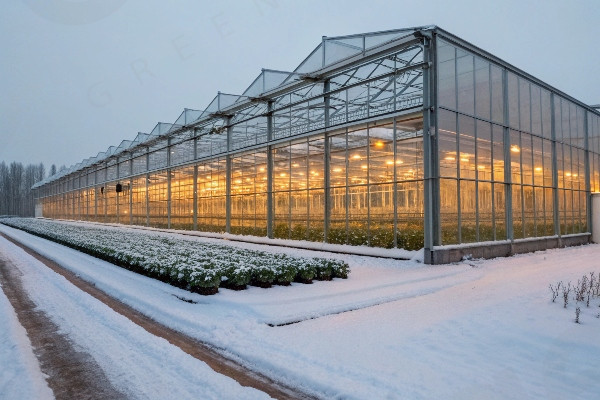
Russian Federation Considerations
Extreme temperature variations stress greenhouse systems throughout annual cycles. Winter temperatures reach -40°C in Siberian regions while summer temperatures exceed 35°C. Thermal expansion calculations must account for 75°C temperature swings between seasons. Structural materials require low-temperature impact resistance to prevent brittle failure during cold snaps.
Extended winter periods require heating systems capable of continuous operation for 6-8 months annually. Natural gas availability varies by region, requiring alternative fuel considerations. District heating connections provide reliable heat sources in urban areas. Biomass heating systems utilize local agricultural waste for sustainable energy production.
Transportation logistics affect equipment selection and installation scheduling. Remote locations require equipment that can withstand long transport distances on rough roads. Modular construction systems reduce shipping volumes while simplifying installation procedures. Local labor availability influences automation levels and system complexity.
Central Asian Adaptations
High wind conditions require enhanced structural designs beyond standard cold climate requirements. Dust storms create additional loading on structural elements while reducing light transmission through glazing materials. Seismic activity in some regions requires earthquake-resistant structural designs. Solar radiation intensity at high altitudes increases cooling loads during summer months.
Water availability limitations require efficient irrigation systems with recycling capabilities. Closed-loop hydroponic systems minimize water consumption while maximizing crop yields. Rainwater collection systems capture precipitation for irrigation use. Water treatment systems handle high mineral content in local water supplies.
Political and economic stability considerations affect technology selections and supply chain management. Local manufacturing capabilities influence equipment sourcing decisions. Currency fluctuations impact project economics and equipment replacement costs. Trade relationships affect equipment availability and technical support services.
High-Altitude Specific Challenges
Atmospheric pressure reductions affect heating system performance and plant physiology. Combustion heating systems require altitude adjustments for proper fuel-air ratios. Pressure compensation systems maintain optimal growing environments for sea-level adapted crops. Ventilation systems account for reduced air density at high elevations.
Intense UV radiation requires specialized glazing materials and plant protection systems. UV-filtering coatings protect both plants and structural materials from degradation. Shade systems provide protection during peak radiation periods. Reflective mulch systems redirect light to plant canopies while protecting root zones.
Temperature fluctuations between day and night create challenging control conditions. Thermal mass systems moderate temperature swings through heat storage and release. Automated ventilation systems respond quickly to changing conditions. Insulation systems provide thermal buffering during rapid temperature changes.
The Final Piece: Integrating Systems for Automated Climate Control?
Manual control fails in extreme climates. System integration prevents catastrophic failures. Automated responses protect crops during equipment malfunctions and severe weather events.
Integrated automation systems monitor structural loads, energy consumption, and growing conditions simultaneously. These systems provide predictive maintenance alerts, automatic emergency responses, and optimized energy management that reduces operating costs by 25-35% while ensuring crop protection during extreme weather events.
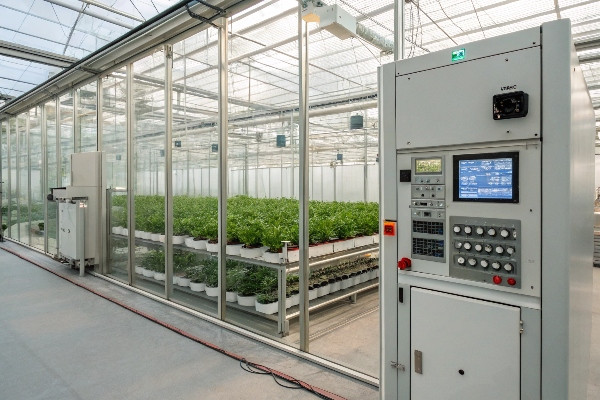
Comprehensive Environmental Monitoring
Sensor networks collect data from multiple points throughout greenhouse zones to ensure accurate environmental control. Temperature sensors monitor air, soil, and structural temperatures to optimize heating system operation. Humidity sensors track moisture levels to prevent condensation and disease problems. Light sensors measure natural radiation levels to supplement with artificial lighting when necessary.
Structural monitoring systems track snow loads and wind forces to prevent catastrophic failures. Load cells measure actual forces on structural members compared to design limits. Accelerometers detect vibrations that indicate structural stress or equipment problems. Strain gauges monitor critical connection points for signs of fatigue or overloading.
Weather stations provide advance warning of approaching severe conditions. Wind speed and direction sensors trigger protective responses before damaging conditions arrive. Snow depth sensors activate heating systems to prevent excessive accumulation. Barometric pressure sensors predict weather changes that require system adjustments.
Automated Response Systems
Emergency protocols activate automatically when sensors detect dangerous conditions. Snow load alarms trigger heating systems to melt accumulation before structural limits are exceeded. High wind alerts close ventilation systems and secure moveable equipment. Power failure responses prioritize critical systems and activate backup power sources.
Predictive control algorithms anticipate system needs based on weather forecasts and historical data. Machine learning systems improve performance by analyzing successful responses to past conditions. Adaptive controls adjust system parameters based on crop growth stages and seasonal requirements. Optimization routines minimize energy consumption while maintaining optimal growing conditions.
Communication systems ensure reliable operation during severe weather events. Cellular backup connections maintain remote monitoring when primary internet fails. Satellite communication systems provide connectivity in remote locations. Local area networks continue operation during external communication failures.
Integration Benefits and Performance Optimization
System integration eliminates conflicts between individual control systems while optimizing overall facility performance. Heating and ventilation systems coordinate to minimize energy waste during temperature control operations. Irrigation systems adjust timing based on humidity levels and ventilation schedules. Lighting systems supplement natural light while accounting for heating contributions.
Energy management systems track consumption patterns to identify optimization opportunities. Load scheduling systems operate high-energy equipment during off-peak utility rate periods. Demand response programs reduce electricity costs by temporarily reducing non-critical loads. Energy storage systems provide backup power while reducing peak demand charges.
Maintenance scheduling systems track equipment operating hours and performance trends. Preventive maintenance alerts ensure critical system components receive attention before failures occur. Parts inventory management systems maintain adequate spare parts for emergency repairs. Service scheduling coordinates technician visits to minimize crop disruption.
Conclusion
Cold climate greenhouse success requires engineered structural integrity, advanced thermal systems, regional adaptations, and integrated automation that transforms harsh environments into profitable year-round growing operations.

